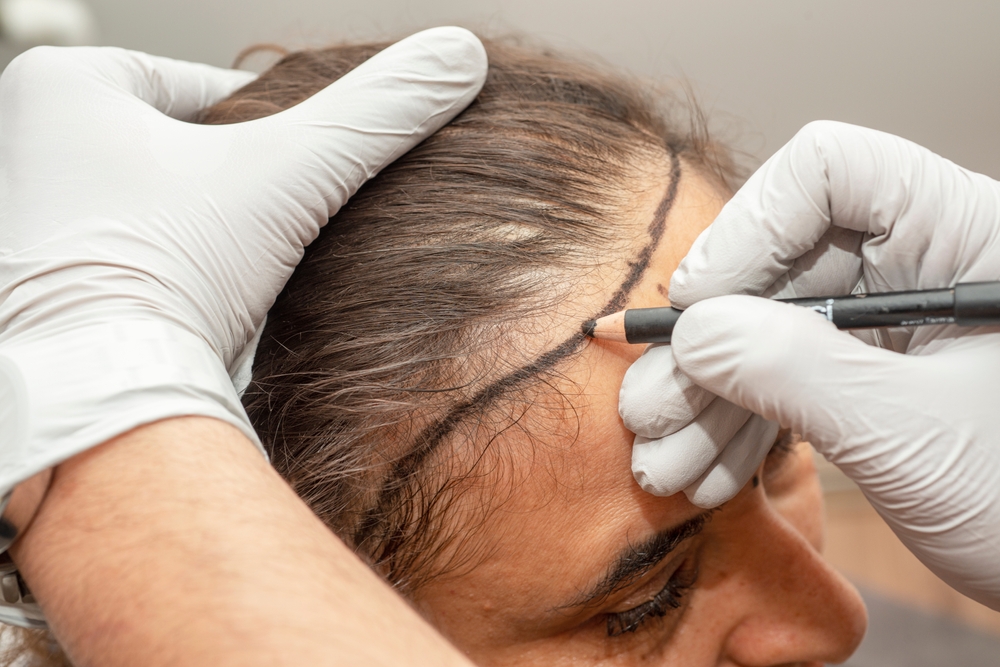Many people struggling with hair loss feel discouraged when they learn that their donor area — usually the back or sides of the scalp — has thin or weak hair. But here’s the truth: even if your donor hair isn’t dense, you can still achieve great results with the right surgical plan and an expert performing your Hair Transplant in Islamabad.
Modern transplant techniques have advanced enough to make natural-looking results possible for people with less-than-ideal donor areas. Let’s explore how this works, what options are available, and what you can expect in such cases.
Understanding Donor Hair and Its Importance
The donor area is where hair follicles are extracted to be transplanted to bald or thinning areas. Typically, this region is at the back and sides of your scalp, where the hair is genetically resistant to balding.
However, not everyone has a thick donor area. Sometimes, due to genetics, stress, or certain medical conditions, this region might also have thinner hair. In such cases, a hair transplant requires advanced planning and careful graft management.
Can a Hair Transplant Work with Thin Donor Hair?
Yes — but with certain limitations and modifications. People with thin donor hair can still undergo a hair transplant if they have enough viable grafts for coverage. The surgeon’s skill and choice of technique play a crucial role in maximizing results.
Here’s how surgeons determine eligibility for patients with thin donor areas:
Assessment Criteria Description Donor Density Number of follicles per square centimeter — higher density means more available grafts.
Hair Thickness: Thicker hair strands provide better coverage, even with fewer grafts.
Scalp Flexibility determines how easily grafts can be extracted.
Overall Hair Pattern helps in planning a natural hairline and balanced coverage.
Even if the donor density is low, a skilled surgeon can still create impressive results using micro-grafting and blending techniques.
Advanced Techniques for Thin Donor Hair
When it comes to Hair Transplant in Islamabad, surgeons at top clinics like SKN use advanced methods that help people with thin donor areas achieve better outcomes. These include:
1. Follicular Unit Extraction (FUE)
This method extracts individual follicular units, allowing surgeons to carefully select the healthiest grafts from sparse areas. It’s ideal for thin donor hair since it minimizes trauma to the scalp and prevents visible scarring.
2. Follicular Unit Transplantation (FUT)
While FUT involves removing a strip of scalp, it can still work for thin donor hair if the central donor zone is stable. It provides a larger graft count in a single session.
3. Body Hair Transplant (BHT)
For individuals with severely thin donor areas, hair from the chest, beard, or back can supplement scalp grafts. Though body hair differs in texture, it provides valuable density enhancement.
Maximizing Results with Thin Donor Hair
If you have thin donor hair, your surgeon will use smart strategies to create fuller coverage while preserving natural aesthetics. Some of these include:
- Strategic Graft Placement: Placing thicker grafts in the front and finer ones in the crown for balance.
- Mixing Hair Types: Combining scalp and beard grafts to improve volume.
- Proper Density Distribution: Using grafts efficiently to cover the most visible areas.
Pre-Transplant Preparation
Before your surgery, your surgeon will assess your scalp condition and hair density. You might also be advised to use medications like Minoxidil or supplements to strengthen existing hair.
Maintaining a healthy scalp and avoiding harsh treatments or smoking before your procedure improves graft survival rates.
Role of Hair Loss Treatment Before and After Surgery
To improve the overall success rate, doctors often recommend Hair loss treatment in Islamabad alongside transplantation. These treatments — such as PRP (Platelet-Rich Plasma) therapy, GFC therapy, or laser hair stimulation — enhance blood flow to the scalp and encourage faster healing.
These non-surgical treatments not only improve the donor area’s health but also maintain transplanted hair in the long term.
Post-Transplant Expectations
If your donor hair was thin, the transplanted results might take a bit longer to fully mature. You can expect visible regrowth in 3–4 months, with final results appearing within 10–12 months.
Consistency in aftercare and following medical advice plays a big role in ensuring lasting results. Avoid scratching, washing too soon, or applying harsh products on the treated area.
Tips to Maintain Transplanted Hair Long-Term
Here are some long-term care practices to make your transplanted hair last longer:
and Don’ts: Use mild, sulfate-free shampoos. Avoid using strong styling products.Eat a protein-rich diet. Don’t expose the scalp to direct sunlight post-surgery. Take prescribed vitamins or biotin supplements. Avoid smoking or drinking excessively. Follow your surgeon’s aftercare plan.Don’t pick or scratch scabs during healing.
Is It Worth It for People with Thin Donor Hair?
Absolutely — with the right clinic and customized approach, people with thin donor areas can achieve a natural, fuller hairline. It may require multiple sessions or the use of body hair grafts, but the final look can still be life-changing.
Remember, realistic expectations and skilled execution are key. Your results might differ from those with dense donor areas, but proper technique and long-term care can make a huge difference.
Conclusion: Achieve Natural Results with SKN Cosmetics
Even if you have thin donor hair, you can still enjoy a confident, natural-looking transformation through an expertly performed Hair Transplant in Islamabad. The secret lies in precision, the right technology, and expert planning.
At SKN Cosmetics, board-certified surgeons specialize in handling complex cases — including those with limited donor areas — using advanced tools and personalized strategies. Their experience ensures every patient walks away with a naturally fuller head of hair.





Comments